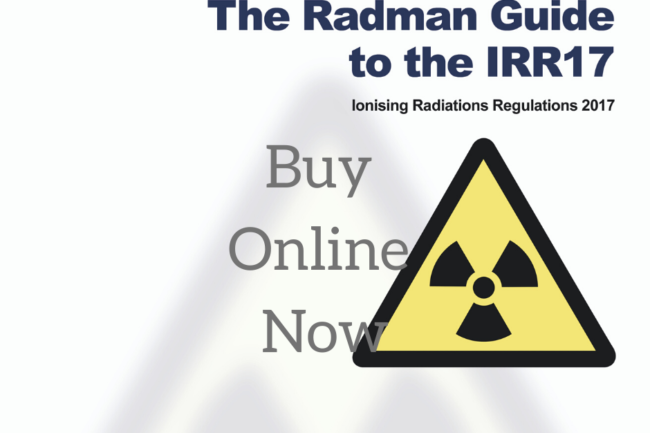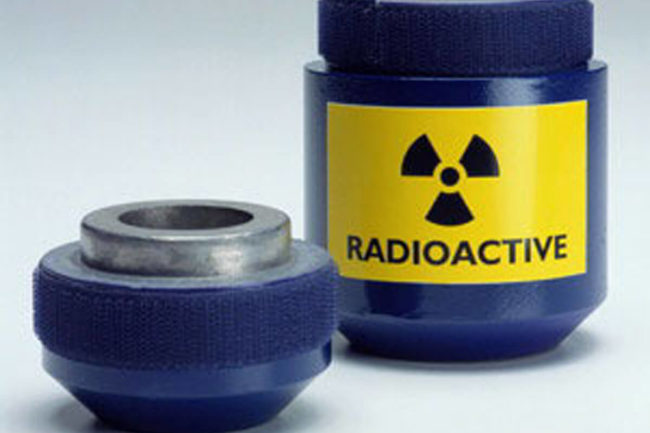Ionising Radiation - The Basics
Frequently Asked Questions about Ionising Radiations
Properties of ionising radiations
Radiation is the process of emitting energy, in the form of either particles or waves. Ionising radiation is a particle or wave with sufficient energy to ‘ionise’ a neutral atom or molecule, and leave them with either a positive or negative charge. This is significant from a health perspective, as the process of ionisation can lead to the disruption of chemical bonds within living tissue.
Ionising radiation can come from a number of sources. The x-rays produced by dental X-ray sets, CT scanners etc. are a form of ionising radiation. Cosmic rays, from within our solar system and beyond can be ionising. Unstable, naturally-occurring, ‘radioactive’ material here on earth emits ionising radiation. The use of radioactive material within nuclear reactors (to generate electricity) also generates additional ionising radiation during the controlled splitting of atoms, and is associated with the radioactive waste produced.
No. Ionising radiation can be in the form of a particle, or as electromagnetic radiation (waves), and each form behaves differently.
Ionising radiation in the form of a particle includes very small (sub-atomic) particles such as electrons, protons and neutrons. When radioactive material (see below) transforms by decay, it can emit ‘beta particles’ (electrons), ‘alpha particles’ (two protons and two neutrons) and/or single neutrons. The radionuclide uranium-238, found in all rocks, soil, and the food we eat, emits (predominantly) alpha particles.
Electromagnetic radiation can be considered as waves of electric and magnetic energy, traveling through a vacuum or a material. There are different types of electromagnetic radiation, categorised by its ‘wavelength’. Examples include ultra-violet light, infra-red, and visible light. However, only electromagnetic radiation at the shortest wavelengths, specifically X-rays or gamma rays, can be ionising.
Radioactivity is the property of unstable atoms (radionuclides) of spontaneously emitting ionising radiation. Their instability is due to the particular ratio of neutrons to protons in their core (nucleus). They emit ionising radiation as they attempt to transform (‘decay’) into a more stable form. Some radionuclides decay to a stable atom (nuclide); others decay to another radionuclide, which then also emits ionising radiation as it decays.
All elements have a specific name, for example uranium, oxygen, iron. Atoms of a specific element have the same number of protons within the nucleus, for example uranium has 92 protons, oxygen has 8 and iron 26. Radionuclides are referred to by the number of protons AND neutrons in the nucleus, for example uranium-238 (92 protons + 146 neutrons) and uranium-235 (92 protons + 143 neutrons).
No. Over 60 radionuclides can be found in nature and many are present all around us at relatively low levels. Some radionuclides are being generated in the upper atmosphere all the time by the action of cosmic radiations from outer space. Other radionuclides have been present in the rocks since the Earth was formed. In total there are approximately 1,500 known radionuclides and most of these are produced under artificial conditions. Most of the radioactive materials used for medical treatment are man-made.
Largely for medical investigation or treatment, in non-destructive testing, or for electricity generation (via the self-sustained splitting of atoms in nuclear reactors). Ionising radiation is used in a wide range of industrial processes and research applications.
Radon is produced as a result of the radioactive decay of uranium-238, a naturally-occurring radionuclide found within rocks and soils. Approximately 99% of all uranium is in the form of uranium-238, which decays through a long chain of radionuclides that includes radon-222. Being a gas, radon can move through porous materials, or escape through cracks, and can find its way into our homes. Most of our background exposure to ionising radiation is due to breathing radon-222 and its decay products (sometimes called ‘radon daughters’). The radionuclides can be inhaled directly from the air, or may become attached to particles of household dust, which are subsequently inhaled. The radionuclides may then be deposited in the lungs. Some will remain in the body, some will be removed. There’s a chance that they may decay (and emit ionising radiation) before your body can get rid of them, resulting in a radiation dose.
This is the time taken for half of the atoms in a radioactive substance to decay. The more unstable the atom the quicker it will decay and the shorter its half-life will be. Half-lives can range from less than a millionth of a second to millions of years depending on the element concerned. After one half-life the level of radioactivity of a substance is halved, after two half-lives it is reduced to one quarter, after three half-lives to one-eighth and so on. After ten half-lives the radioactivity is reduced to one-thousandth of the original.
Exposure to ionising radiation
Living tissue in the human body can be damaged by ionising radiation. This damage can be caused either directly by the radiation damaging the genetic code (DNA) or indirectly by producing highly reactive chemicals (free radicals) which then go on to damage the DNA. The body attempts to repair the damage, but sometimes the damage is too severe or widespread. Cells may die if the damage is too great.
As early as 1910, radiation was known to cause skin cancer. Among the best known long-term studies are those of Japanese atomic bomb blast survivors, other populations exposed to fallout from nuclear testing (for example, natives of the Marshall Islands), and uranium miners. All cancers, whether solid tumors or leukemia (blood cancer) are preceded by a period of time before the cancer develops (i.e. a latency period). It is not precisely understood how radiation damage may lead to a cancer years later. It is likely that the radiation damage acts in combination with other factors (e.g. chemicals, genetic make-up, health, etc.) which eventually lead to the cells multiplying uncontrollably.
Everybody is exposed to ionising radiation, wherever they are. This ‘background radiation’ is measurable everywhere, and in the UK it’s approximately 2.7 milliSieverts per year (mSv/y). Most of this dose, about 50%, is due to radon gas with the rest coming from other environmental sources. Only a small amount comes from man-made sources and most of this is due to medical exposures such as X-rays.
The effects of very low levels of ionising radiation have proved very difficult to study, since they are well below the levels of natural background radiation. In fact, the conclusions we make about the effects of low levels of radiation come from the known effects of higher levels of radiation exposure. As a result, there is no conclusive evidence for setting a ‘safe’ level of exposure above background. It is internationally recognised that any exposure carries some risk and that the risk increases as the exposure increases.
How far the ionising radiation can penetrate a material depends upon its type, and how much energy it has. In nuclear terms, alpha particles are large and slow and can be simply blocked by a sheet of paper, or the layer of dead skin cells which cover our bodies. Beta particles are much smaller travel at higher speeds but can be blocked by a thin sheet of aluminium or Perspex. Gamma radiation and X-rays are electromagnetic radiation, consisting of waves of energy (photons) which travel at high speed and require dense shielding materials (e.g. lead and concrete) to reduce their number to an acceptable level.
We cannot prevent our exposure to background radiation (but can minimise radon exposure if living in ‘radon affected areas’ – see Hot Topics), and the benefits of medical exposure far outweigh any risks. Therefore, there is little we can do to minimise our exposure which will have any significant effect on our long term health. The human body is very good at repairing radiation damage. Therefore, the best protection is perhaps to live healthily to encourage a robust immune system!
These effects of radiation exposure are known as ‘early effects’. They only occur if an individual has received a relatively large dose, in a short period of time, which exceeds a certain threshold level. If a dose is received below this threshold then no early effects are observed. The thresholds for these early effects start at around
1 Sv. A dose of 5 Sv is generally considered lethal. Therefore, to put this into context, you would have to receive approximately 400 years worth of natural UK background radiation in a matter of hours to reach these thresholds.
The annual worker dose limit of 20 mSv has been set at a level which represents a 1 in 1000 risk of contracting cancer. That is to say, if 1000 people were exposed to 20 mSv in one year (on top of our annual background dose) then we would expect one person to develop a cancer later in life as a result of this exposure. This limit of 20 mSv has been arrived at by reference to evidence from the Japanese bomb blast survivors and other groups exposed to radiation. However, for exposures in the workplace this dose limit is seen as a backstop and is the very maximum that is permissible. The over-riding principle which is applied in the UK is that all radiation doses should be kept ‘as low as reasonably practicable’ (ALARP).
Load More
Need more help?
Radman Associates is a long established RPA Body formally recognised by the HSE. For Radiation Protection Advice about ionising radiation please email admin@radman.co.uk or call 01625 576000.






